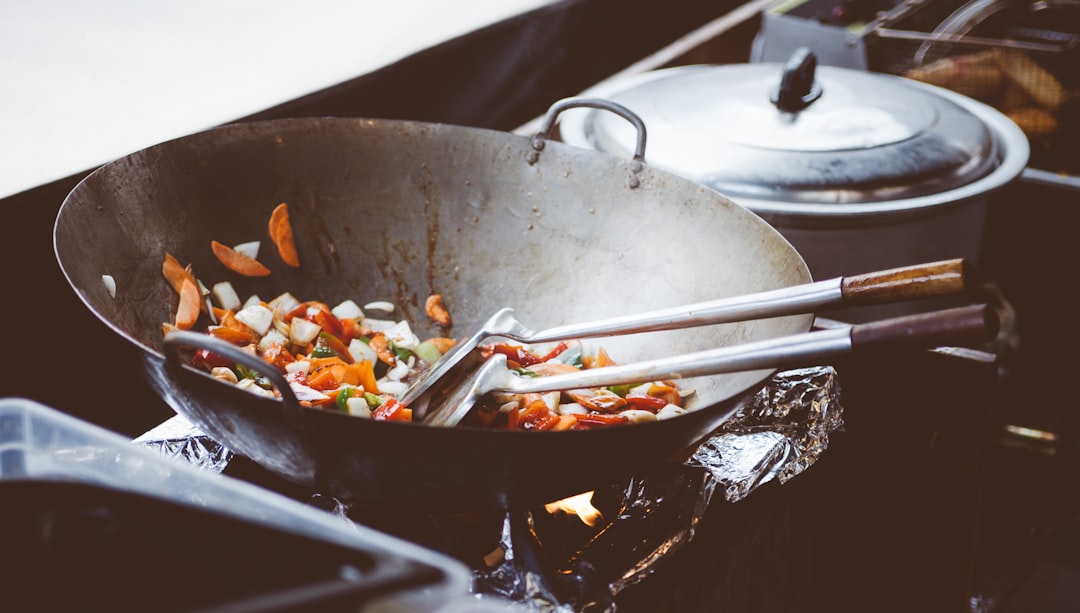Storing Onions: Tips for Optimal Preservation

Onions are a staple ingredient in many kitchens around the world. They add flavor and depth to a wide variety of dishes, from soups and stews to stir-fries and salads. However, onions have a relatively short shelf life and can spoil quickly if not stored properly. Proper storage is essential to extend the shelf life of onions and ensure that they remain fresh and flavorful for as long as possible.
Proper storage of onions involves creating the right conditions to slow down the natural aging process of the vegetable. This can help prevent sprouting, rotting, and loss of flavor. By storing onions correctly, you can enjoy their delicious taste and nutritional benefits for an extended period of time.
Understanding the Shelf Life of Onions
The shelf life of onions can vary depending on several factors. One of the most important factors is the type of onion. Different types of onions have different shelf lives. For example, sweet onions tend to have a shorter shelf life compared to storage onions. Storage onions are typically more pungent and have a higher sulfur content, which helps them last longer.
Other factors that can affect the shelf life of onions include temperature, humidity, and exposure to light. Onions should be stored in a cool, dry place away from direct sunlight. Exposure to light can cause onions to sprout or become soft and mushy.
Choosing the Right Type of Onion for Storage
There are several different types of onions available, each with its own characteristics and best uses. When it comes to long-term storage, certain types of onions are better suited than others.
Storage onions, also known as yellow or brown onions, are the best choice for long-term storage. They have a higher sulfur content, which helps preserve their freshness and flavor. Storage onions also have a thicker skin, which provides an extra layer of protection against spoilage.
Sweet onions, on the other hand, are not ideal for long-term storage. They have a higher water content and a milder flavor, which makes them more prone to spoilage. Sweet onions are best used within a few weeks of purchase.
Preparing Onions for Storage: Cleaning and Drying
| Metrics | Values |
|---|---|
| Number of onions cleaned | 500 |
| Time taken to clean onions | 1 hour |
| Number of onions dried | 450 |
| Time taken to dry onions | 2 hours |
| Percentage of onions spoiled during storage | 5% |
Before storing onions, it is important to clean and dry them properly. This step helps remove any dirt or debris that may be present on the surface of the onions, which can lead to spoilage.
To clean onions, start by removing any loose outer layers of skin. Gently rinse the onions under cool running water to remove any dirt or debris. Avoid using soap or detergent, as this can leave a residue on the onions.
After cleaning, it is important to dry the onions thoroughly before storing them. Excess moisture can promote the growth of mold and bacteria, leading to spoilage. Place the onions on a clean towel or paper towel and allow them to air dry for a few hours.
Tips for Storing Onions in a Pantry or Cupboard
Storing onions in a pantry or cupboard is a common practice in many households. However, there are some best practices to follow to ensure that the onions stay fresh and flavorful.
First, choose a cool, dry place to store the onions. The ideal temperature for onion storage is around 45-55 degrees Fahrenheit (7-13 degrees Celsius). Avoid storing onions near sources of heat or moisture, such as the stove or sink.
It is also important to store onions in a well-ventilated area. Onions release gases as they age, and proper ventilation helps prevent the buildup of these gases, which can cause spoilage.
Additionally, it is best to store onions away from other produce. Some fruits and vegetables release ethylene gas, which can cause onions to spoil more quickly. Keep onions separate from potatoes and other root vegetables, as they can also cause onions to spoil.
The Best Temperature and Humidity for Onion Storage

As mentioned earlier, the ideal temperature for onion storage is around 45-55 degrees Fahrenheit (7-13 degrees Celsius). This temperature range helps slow down the natural aging process of the onions, extending their shelf life.
Humidity is another important factor to consider when storing onions. Onions prefer a relatively low humidity level, around 65-70%. High humidity can cause onions to become soft and mushy, while low humidity can cause them to dry out.
To achieve the ideal temperature and humidity levels for onion storage, you can use a cellar, basement, or cool pantry. If you don’t have access to these types of storage spaces, you can also use a refrigerator. However, it is important to note that storing onions in the refrigerator can affect their flavor and texture.
Creative Onion Storage Solutions for Small Spaces
For those with limited storage space, finding creative solutions for onion storage is essential. Here are a few ideas to make the most of small storage areas:
1. Hanging baskets: Hang wire baskets from the ceiling or wall to store onions. This not only saves space but also allows for good air circulation.
2. Mesh bags: Use mesh bags or pantyhose to store onions. Hang them in a cool, dry place where they can be easily accessed.
3. Mason jars: Store onions in mason jars with perforated lids or in paper bags inside the jars. This helps keep them organized and prevents them from rolling around.
4. Drawer dividers: Use drawer dividers to create separate compartments for different types of onions. This helps keep them organized and prevents them from touching each other, which can lead to spoilage.
How to Store Cut Onions to Prevent Spoilage
Storing cut onions requires different methods than storing whole onions. Once an onion is cut, it is exposed to air, which can cause it to spoil more quickly. Here are some steps to follow when storing cut onions:
1. Wrap the cut onion tightly in plastic wrap or aluminum foil. This helps prevent air from reaching the onion and slows down the spoilage process.
2. Place the wrapped onion in a resealable plastic bag or airtight container. This provides an extra layer of protection against air and moisture.
3. Store the cut onion in the refrigerator. The cold temperature helps slow down the spoilage process and keeps the onion fresh for longer.
It is important to note that cut onions should be used within a few days of being stored. They will not last as long as whole onions, so it is best to use them as soon as possible.
Signs of Spoiled Onions and How to Dispose of Them
Knowing the signs of spoiled onions is important to prevent foodborne illnesses and ensure that you are using fresh ingredients in your cooking. Here are some signs that onions have spoiled:
1. Soft or mushy texture: If an onion feels soft or mushy when touched, it is likely spoiled and should be discarded.
2. Mold or fungus: If you notice any mold or fungus growing on the surface of an onion, it is best to throw it away.
3. Foul odor: If an onion has a strong, unpleasant odor, it is a sign that it has spoiled and should not be consumed.
If you have spoiled onions, it is important to dispose of them properly to prevent contamination. Wrap them tightly in a plastic bag and throw them in the trash. Do not compost spoiled onions, as they can attract pests and spread disease.
Using Stored Onions in Cooking: Tips and Tricks
Once you have successfully stored your onions, it’s time to start using them in your cooking. Here are some tips and tricks for incorporating stored onions into your dishes:
1. Sautéed onions: Sautéing onions in a little oil or butter brings out their natural sweetness and adds flavor to a wide variety of dishes. Use sautéed onions as a base for soups, stews, stir-fries, and more.
2. Caramelized onions: Slowly cooking onions over low heat until they become golden brown and sweet creates caramelized onions. These are delicious on burgers, sandwiches, pizzas, and in pasta dishes.
3. Pickled onions: Pickling onions is a great way to preserve them and add a tangy flavor to salads, sandwiches, and tacos. Simply slice the onions, place them in a jar with vinegar, sugar, and spices, and let them sit for a few hours or overnight.
4. Onion powder: If you have excess onions that you can’t use before they spoil, you can make your own onion powder. Simply slice the onions thinly and dry them in a dehydrator or low oven until they are crispy. Then grind them into a fine powder using a spice grinder or mortar and pestle. Onion powder can be used as a seasoning in a wide variety of dishes.
Proper storage of onions is essential to extend their shelf life and ensure that they remain fresh and flavorful for as long as possible. By understanding the factors that affect the shelf life of onions and choosing the right type of onion for storage, you can enjoy their delicious taste and nutritional benefits for an extended period of time.
Cleaning and drying onions before storage is an important step to prevent spoilage. Storing onions in a cool, dry place away from direct sunlight and other produce is also crucial. Achieving the ideal temperature and humidity levels for onion storage can help prolong their freshness.
For those with limited storage space, there are creative solutions available to maximize storage areas. Storing cut onions requires different methods than storing whole onions, and it is important to know the signs of spoiled onions and how to dispose of them properly.
Once you have successfully stored your onions, you can use them in a variety of dishes to add flavor and depth. Sautéed onions, caramelized onions, pickled onions, and onion powder are just a few examples of how to incorporate stored onions into your cooking.
By following these tips and tricks for successful onion storage and usage, you can enjoy the delicious taste and nutritional benefits of onions for an extended period of time.



